Redux: DefenceTech Marketing Battle Royale
Are DefenceTech brands done with "Defence Dun"? Let's survey the combatants to find out.
A few months ago I highlighted the aesthetic and strategic conformity of the sector in Anduril vs Helsing: Marketing Head to Head. Although a bit of a slow burner, this was easily my most read post, with a lot of engagement, as well as a few business leads (nice!). In that post I touched on a few other DefenceTech brands so I thought it would be interesting to revisit them to see what, if anything, has changed. This post runs a little longer than Gmail’s max limit so I recommend you click to view it in your browser. Strap in!
Exactly 5 months ago, I published Anduril vs Helsing: Marketing Head to Head a post comparing the brand marketing approach of the two most DefenceTech’s most prominent startups in the US and Europe. There hasn’t been a lot of attention on the marketing of DefenceTech companies, I wanted to understand what their brands could tell us about changes happening withing defence marketing.
Although the article was a head-to-head between those Anduril and Helsing, the comparison highlighted something else: a sea of sameness in the rest of the category. Beyond the big names, a long tail of defence brands have adopted identical aesthetics, and indistinct messaging:
When it comes to brand fonts and colourways, both Anduril and Helsing have adopted the ubiquitous (and IMO very boring) “Defence Dun” font, colour and language combo for their brands. It’s something you see again and again with defence brands. It’s dull, but seems to be nearly industry wide - go to any random defence company website (like this, this, this, or this and you get either beige, off-white, cream, ivory or black). And so it is with Anduril and Helsing. As you can see from these website screengrabs, you could swap either brand around with little effort. So far, so dull.
For the benefit of this analysis, I’ve replaced the URLs in that quote with ones from the Wayback Machine set in late February this year, the date of the original post.
So in this post, I’m not taking another look at Anduril or Helsing, but to the companies that got caught my the crossfire, I’m circling back for another strafing run on Cambium, Castelion, HavocAI, and Saronic. These aren’t small companies, together them they’re worth an estimated $4.5bn. So let’s take a look at who’s moved, who’s stalled, and what that tells us about the state of Defence marketing in mid-2025.
Glossary: Key marketing terms
Before we proceed, I thought it useful to review a few key terms. The defence industry does love an acronym and its terminology is a specific language. But we marketers can hold our own as well:
Brand
What they say about you when you’re not in the room.
Your brand is the cumulative perception of your company that exists in the minds of your audience. It’s shaped by what you do, how you speak, what you signal, and who believes in you. Ultimately companies can only influence their brand but they not control it.
Brand Strategy
The deliberate attempt to make people care.
It defines who you are, who you're for, why you matter, and what makes you different. It's the blueprint behind every decision. It’s possible to live without it, but get it right and it adds enormous commercial value to your business.
Positioning
The story you tell to own a corner of the customer’s mind.
It’s how you shape perceptions relative to others in the market. The more clear, memorable and distinct it is, the more you’ll be able to own that bit of market territory.
Branding
The costume your strategy wears to the party.
Logos, colours, taglines — the visible stuff and importantly, the stuff you can control. It matters, but it’s not the same as strategy, it works in service of you strategy.
Narrative
The thread that turns facts into belief.
Narrative is why it matters, not just what it is. It connects capabilities to purpose.
Creative Risk
The decision to create a memorable brand, even if it makes people uncomfortable.
Risk is where conviction lives. Most avoid it. Some confuse risk with recklessness. Some win with it and they win BIG. “Recklessness” is attempting to invade Ukraine without considering whether Ukrainians love their country and will defend it. “Creative Risk” is attacking Axis supply lines and airbases in North Africa from the desert with a small, highly mobile force. Get Creative Risk right and you can change everything.
What’s Actually Changed?
Ok, so back to the analysis. To gauge progress, I revisited the websites and messaging of four DefenceTech companies I referenced in the original comparison or explored later: HavocAI, Castelion, Cambium, and Saronic. Using the Wayback Machine, I looked at how their websites communicated their brands in February this year compared to today.
Let’s call it a mid-2025 pulse check.
Saronic
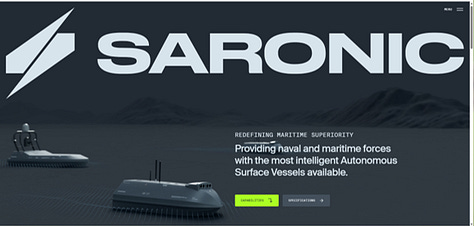
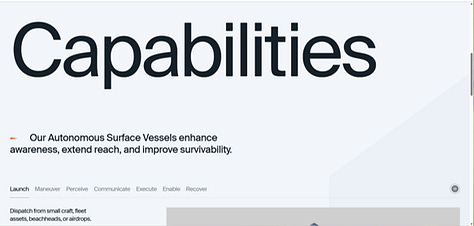
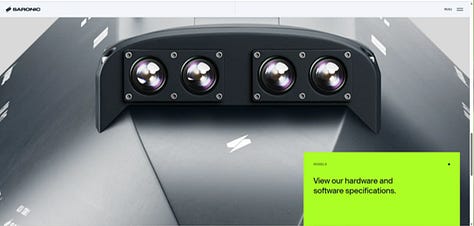
Before:
Crisp, corporate, and a kinda forgettable. Generic spec-driven visuals, a muted naval palette (fluoro green highlights notwithstanding), and capability-focused copy. It tells me what it does but not why I should care.After:
No changes.
Cambium
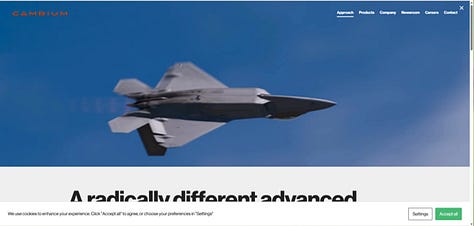
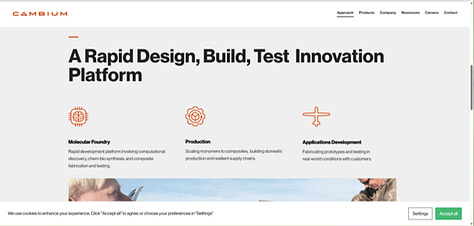
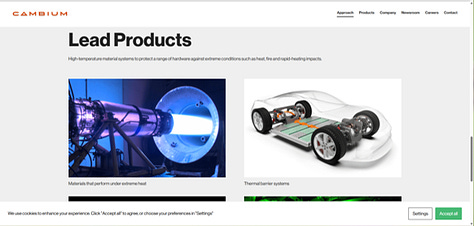
Before:
Standard-issue B2B playbook. A clean but lifeless site – beige backgrounds, nice but uninteresting product renders, iconography that looks AI-generated and techno-optimist language about advanced materials. Talks about radical difference but the Stated Preference doesn’t match the Revealed Preference from a brand perspective. No sign of a distinctive voice or narrative. It felt like you were browsing a supplier catalogue for sump pumps.
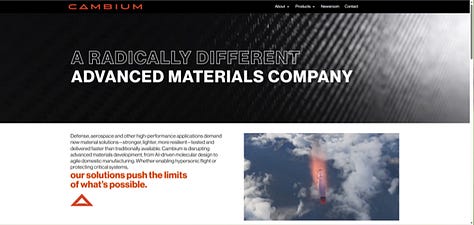
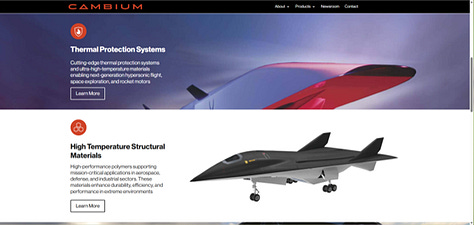
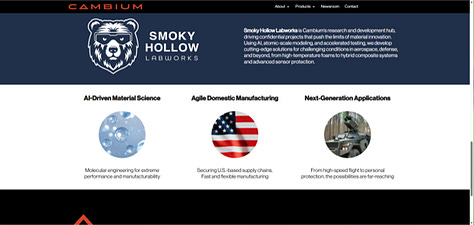
After:
A more polished UI, but even more sterile. The updated site is slicker and more “retail,” but the storytelling has regressed. More focus on hypersonic missiles, fair play, they’re so hot right not. But still no positioning, no sense of who they’re for or why they exist beyond “we make good materials”. Weirdly, if you keep scrolling you find some more interesting stuff – this Labworks thing sounds interesting, why not make a feature of it higher up the page?! Overall the site is functionally competent but strategically adrift.
Castelion

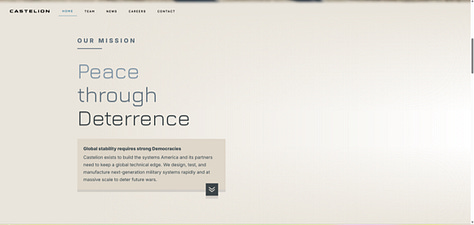
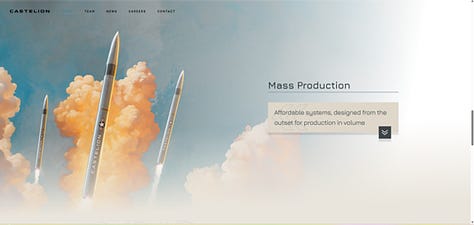
Before:
The positioning isn’t “Peace through deterrence” is the entire point of defence, but it’s just not an ownable territory. Visual minimalism to a fault — stencilled fonts, muted palette, and serious copy about hypersonic weapons. It gestured at scale and urgency, but the presentation was dry and indistinct, blending into the broader defence landscape. But I do like what look to be hand-drawn style visuals further down the page. Some hints at a sense of inspirational beauty (yes that can be useful, event in Defence marketing) further down the page.

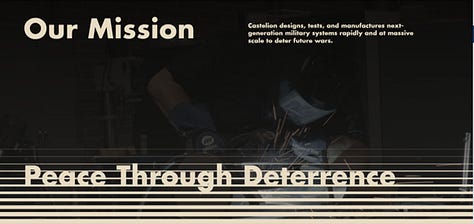
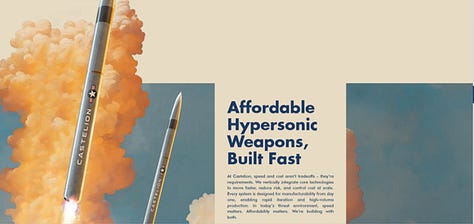
After:
Amazing. Someone with a wonderful sense of art direction has been allowed to have a go at this brand. A bold rebrand with a retro-futurist twist: new logo, pastel gradients, and a visual tone that sort of “Miami Vice in desert fatigues”. From a design perspective, the page just gets better and better the further you scroll. Those illustrations from the old site now burst into life. Sadly the overall brand, narrative and copy remains exactly the same — no new messaging, no updated positioning. It’s a vibe shift, not a strategic one. This company needs a marketer to get the best from a clearly very talented designer.
HavocAI
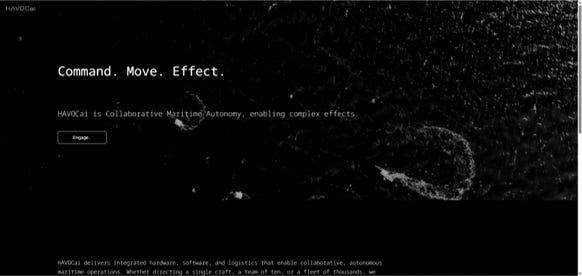

Before:
A classic example of “Defence Dun” (though in black in this case). Black on white, generic font, and vague messaging. The website offered little beyond broad mission claims. No clear narrative, no emotional hook, and no visual distinction. It felt inert, like the idea of a defence startup, not a real one.
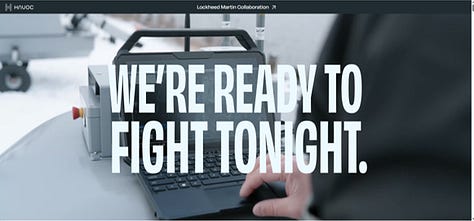

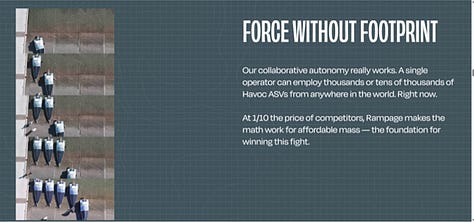
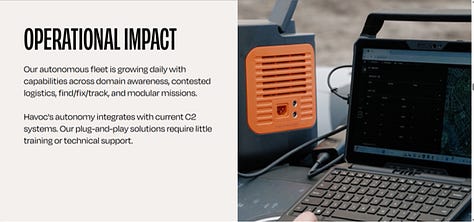
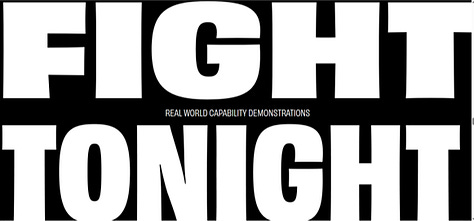
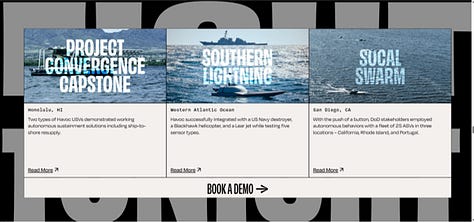
After:
Whoa. A dramatic pivot. Now operating under the fight-tonight.com domain, HavocAI’s brand radiates urgency. Clearer messaging, sharp callouts (cost, demos, readiness), and confident visual identity. As you scroll down the page, the messaging gets more urgent. A marketer has clearly been involved here! Still a little generic in tone, but now HavocAI looks like it has a pulse, and a mission.
The Gravitation Pull of Beige
The problem across most of these companies isn’t a lack of polish, it’s a lack of intent.
Defence brands continue to rely on what I’ve previously called the "Defence Dun”. The aesthetic is beige, black, grey, or off-white palettes; clean sans-serif fonts; mission-speak so sanitized it could be AI-generated. But the mutedness of Defence Dun also (and more generally) applies to the fundamentals of Brand and Brand Strategy – positioning is unclear or generic. I’m not given a reason to care and once brand can be substituted for another in my memory, exactly the problem I discussed in The Imitation Trap.
Saronic remains unchanged. Cambium’s refresh is cleaner but somehow more retail. I love what Castelion has done from a design perspective but I’m none the wiser as to their brand. These companies don’t lack the budget to get their brand strategies and narratives sharpened up (Saronic is estimated to be worth $4bn), but they seem to lack the urgency or understanding.
HavocAI’s Sharp Turn
The only notable change – very notable – comes from HavocAI. Their new site (now redirected to fight-tonight.com) is sharper, clearer, and punchier. It opens with urgency: "We’re ready to fight tonight."
They talk cost. They talk readiness. They talk demos: naming field events like San Diego, Honolulu, Southern Lightning. There’s actual energy. You might quibble with the creative choices – the tone still leans generic in places – but they’ve made a meaningful pivot. This isn’t a lick of paint on the branding. It’s a clear jolt in positioning. And it’s great to see stuff like this.
Where to from here?
In a category that deals in cutting-edge tech, strategic deterrence, autonomous everything, and which is currently being saturation bombed with funding, it’s remarkable how undifferentiated DefenceTech brands can be.
On the one hand, this doesn’t matter – defence procurement cares whether your system works, or is efficient or meets a specific requirement. You’re engineering towards that first and foremost. But on the other hand it absolutely matters, as I covered in Marketing for Mavericks the audience for DefenceTech businesses is now much wider. You’re competing for talent, for funding, for resources and for customers. So whether you like it or not, cutting through and gaining business traction through your marketing is essential.
Creative Risk isn’t decoration, it’s essential to establish differentiation. Brands in Defence don’t need to be loud, but they do need to be clear. They need to stand for something. They need to make us believe.
Anduril has shown us what is possible with DefenceTech marketing, but this also means it is now also necessity. I’m excited to see what HavocAI has done – it shows that other companies realise that a differentiated brand is essential in an increasingly crowded market. But there’s so much more to be done.
Let’s roll.




